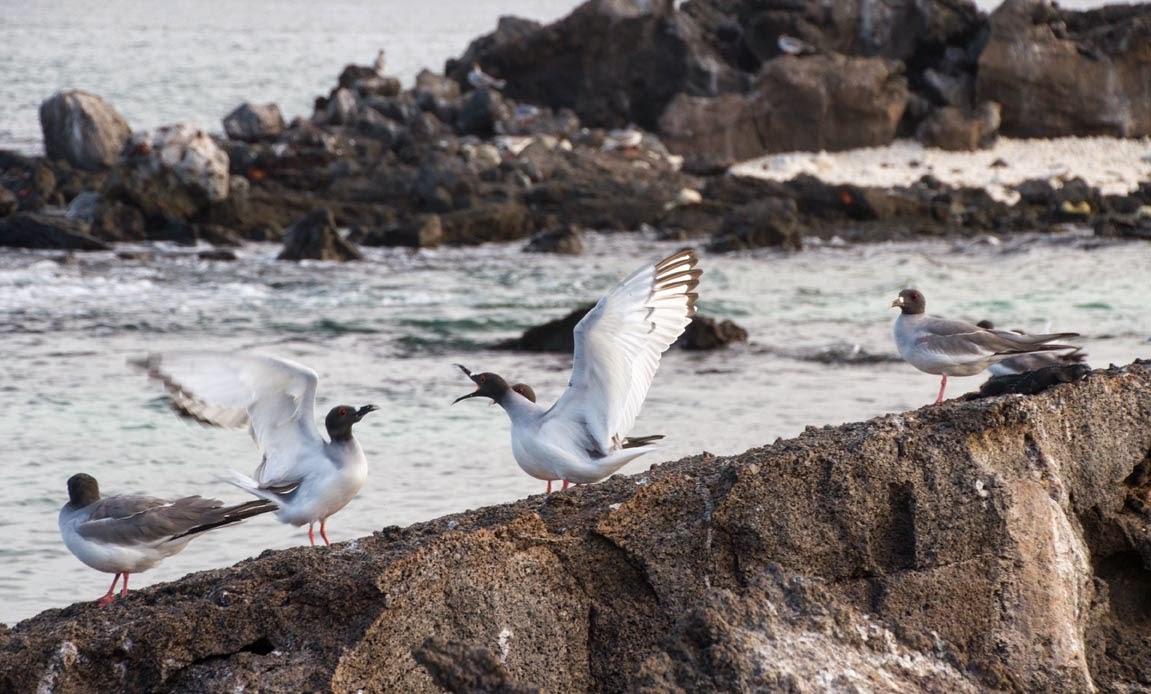Our first
landing was what was called a “wet” landing – basically, expect to get at least
your feet wet!! We got from the Beagle
to the landing site via panga. That’s
the name that folks on the Galapagos use for what I know as a zodiac. Anyway, we hit the treasure trove in terms of
animals on our first landing!
First
Iguana
As we walked
out of the surf and onto shore, we got our first taste of wildlife, this little
iguana. I know, he kind of looks scary
and creepy, but really, he was more leery of us than we were of him! He kind of reminded me of the monsters in the
old black and white “B” horror movies I watched when I was younger – with
monsters attacking some poor folks in Japan, usually!
A
Gathering of Sally Lightfoot Crabs
As we walked
along a trail on the shore, we came across these really bright colored, almost
pretty crabs. They are commonly called
Red Crabs, but their formal name is Sally Lightfoot Crabs. The bright blue color is actually the color
of their tummies.
Sally
Lightfoots in the Surf
Here’s another
view of the Sally Lightfoots. I loved
the way the surf just sort of swirled around these bright little guys.
Great
Blue Heron – Tree Sitting
Great Blue Herons
are birds that I’ve seen around the Midwest where I lived for many years. But, here, they seem to know this is their
place and we are the interlopers, and they do not display any fear. They just go about their business of looking
for food (in this case, baby sea turtles) and calmly keep us at a distance they
feel comfortable with.
Heron
Stroll Before Dinner
Later in our
hike, I came across this other heron. He
seemed to be taking a stroll before dinner.
He walked fairly close to me, as I just stood there and watched him.
Pretty
in Pink
Just after we
saw our first heron, in a small little pond just over the sandy bluff
separating the sea from this pond, we saw some flamingos in the wild. It was such a calm, serene sight, and I love
the reflection that can be seen in the still water.
Sooty
Tern
I heard this
little guy way before I saw him. He may
be small, but his voice is huge! He was
so loud! He’s actually not known for
being on this island, but I guess he didn’t get the memo!
First
Frigatebird in Silhouette
We’ll see more
of these birds over the next few days, but this was our first sighting of a
Frigatebird. I really like the
silhouette against the late afternoon sky.
A very different bird, but then, that is more of a promise of the
Galapagos than anything else.
Enjoy!





















































